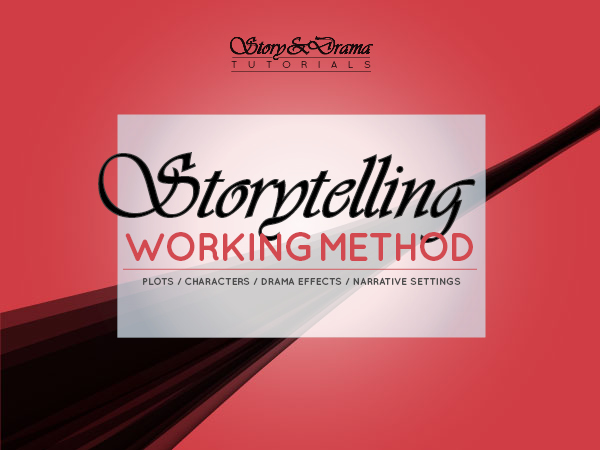 |
|
PDF, 42 pages, free!
|
| Download the Free storytelling working method in PDF |
Writing method to write a screenplay, a novel, a song, a series, a video clip, a show…
A free introduction to the job of scriptwriter and narrator
Get organized! This is the guiding principle of the writing method.
Indeed, a story always develops on several axes simultaneously, we develop plots, characters, scenes, in a language of words, images, sounds… One loses oneself there quickly.
Author of a fictional work of more than a million words, 6 times published, twice awarded, I have conceived for you, beginners or even confirmed authors, this method of screenwriting which has the advantage of being clear and precise on the type of information that a narrative project implies, and on the different ways of representing and treating them.
This working method is a progressive training to the narrative profession, accessible to everyone from the beginner to the professional because it is based on simple logic and a step-by-step reflection during which each decision involves others.
This free storytelling course is equally applicable to any type of narrative project regardless of its media, size or style. It is therefore intended for all authors, in literature, audiovisual, music, etc:
- writers, novelists
- screenwriters,
- directors of short and feature films,
- lyricists,
- cartoonists.
Method of narrative creation
Developing a story requires a lot of information, writing pages of notes, drawing diagrams and sketching out narrative plans.
That’s why I begin by introducing you to the main types of working documents needed to build a coherent project, without getting lost in the details or giving up on making a complex and thoughtful work – indeed, too many authors unable to organize their creative work sink into total improvisation and end up with unclear plots that lead nowhere, with useless and boring scenes, with passive and lifeless characters.
With a logbook, you can stay on course and build your story solidly, storing the sure elements in a Bible.
To help you think through your work, I recommend that you think through all of its parameters, and your intentions: its medium, its message, its audience, the aesthetic effect you are trying to produce, etc. These questions will guide you toward defining your story. These questions will guide you towards the definition of the work to be written, and will prevent you from getting lost in the creation of shapeless works that touch no one, that have nothing to say, that make no effect.
Finally, I will guide you through the necessary and logical stages of story construction: research, narrative development, and finally writing.
With this intellectual background, I guarantee that you will make better work than if you work without a method, without a plan, without an overall vision.
Good artists know what they are doing!
I wish you good luck in your creations, and much success!
Table of contents
1.1/ Steps of work + working documents
- The “Board Journal”
- The “Bible”
1.2/ Project setup
- From first idea to project specifications
- The general idea
- Intentions – Messages to send – What do we mean?
- Impacts wished
- Genres
- Reference-works – List and study typical stories
- Budget
- Time (project duration, deadline?)
- Skills, resources needed
- Media
- Size/Duration (in pages, in minutes)
- Audience
1.3/ Story development
- Project 1 – Heroic fantasy novel
- Project 2 – Electroclash album
- Project 3 – Hip-hop photocomics
- Project 4 – The Squatt, webserie
2/ Brainstrom and research
- From documentation to synopsis
3/ Plots and characters development
- Design a plots structure
- Build the sets of characters of each plot
- Build each character’s set of properties of each character of each plot
- Weigh and put the dramatic properties together
4/ Writing the synopsis
- The plot structure becomes a synopsis
- Checking tools & Softwares
- Now the synopsis / outline becomes a treatment
- Finally we get to write the final script from the synopsis and/or the treatment
- Edit the script
5/ Sending or making
- Send the script to partners / boss / sponsor / publisher